The biotech IPO market is the intersection of frontier science and public capital; found in this market are opportunities to make or lose fortunes almost overnight on a single trial readout. This guide takes investors through a practical, evidence-first due diligence framework of sizing risk, spotting durable value, and knowing how to review biotech stocks before risking real capital.
Market Context: why biotech IPO analysis matters
The biotech IPO window often opens when science matures enough for companies to commercialize or de-risk lead programs. Unlike typical tech listings, many biotechs come to market with little or no revenue; their value is priced on clinical promise, trial design, and regulatory path. For investors used to public comparables, pharmaceutical investing adds special variables: mechanism plausibility, patient populations, and payer dynamics.
Public offerings also reshape the capital map: an IPO provides new financing but brings regulatory scrutiny, analyst coverage, and trading volatility. Savvy investors treat a biotech IPO like a staged bet — one that must be re-evaluated at each upcoming catalyst.
Pre-IPO Due Diligence: science & clinical trial phases
Understanding the science is non-negotiable. Start by mapping the program to the standard clinical trial phases:
- Phase I — safety and dosing in small cohorts.
- Phase II — preliminary efficacy and dose optimization.
- Phase III — large-scale pivotal trials designed to support regulatory approval.
A company at Phase II carries different binary risks than one with Phase III readouts pending. Ask: are endpoints clinically meaningful? Is the patient population realistic to recruit? Does the trial design minimize confounders? Examine published preclinical data, peer-reviewed papers, and whether independent labs replicate key signals.
When a biotech targets specialty applications — for example, a novel biologic used in aesthetic medicine — distribution discussions might include clinics such as an aesthetic science clinic that could adopt the therapy early. That real-world adoption signal can help validate commercial assumptions for certain indications.
Regulatory Pathways & FDA approval impact
Regulatory strategy should be explicit in an S-1 and management presentations. Special programs (Breakthrough Therapy, Fast Track, Accelerated Approval) can shorten timelines but often come with post-approval obligations. Understand how regulators will view surrogate versus clinical endpoints.
The FDA approval impact on valuation is profound: approval can convert a speculative pre-revenue company into a revenue-generator with reorderable economics, while a negative decision can trigger steep re-rating. Model approval probabilities (Bayesian or scenario-based) and assign conservative timelines — real-world regulatory clocks slip more often than they run perfectly.
Intellectual Property, Freedom to Operate & Partnerships
Patents and exclusivity underpin commercialization. Evaluate patent breadth (composition, method-of-use, delivery), remaining life, and geographic coverage. Freedom-to-operate analyses are critical where crowded modality classes (e.g., CRISPR, ADCs) risk third-party claims.
Strategic partnerships — licensing deals with big pharma, manufacturing agreements, or co-development pacts — can de-risk programs and provide non-dilutive capital. Conversely, heavy dependence on a single partner can be a concentration risk.
Commercial Potential & Market Access
Sizing the addressable market must be realistic. For therapeutics, estimate incidence/prevalence, likely uptake rates, and realistic pricing under reimbursement regimes. Consider competitive dynamics: is the drug a potential first-in-class winner or a me-too with modest differentiation?
Payers matter. Therapies with tangible cost offsets (reduced hospitalizations, durable cures) have easier reimbursement paths than lifestyle or marginal-benefit products. This is where pharmaceutical investing experience pays off — understanding HTA (health-technology assessment) frameworks and payer willingness influences peak-sales scenarios.
Financials, Capital Structure & how to evaluate biotech stocks financially
Financial diligence includes runway, burn rate, and dilution risk. For pre-revenue biotechs, the balance sheet tells you how many key catalysts the company can fund before raising more capital. Evaluate:
- Cash runway vs. pivotal catalyst timelines.
- Historical and projected burn (R&D, G&A).
- Potential dilution scenarios and anti-dilution protections.
When asking how to evaluate biotech stocks, combine financial ratios with scientific checkpoints: a cheap market cap means little if the company lacks cash to reach the next inflection point. Consider convertible debt, milestone payments, and warrant overhang when modeling post-IPO returns.
Management, Governance & Execution Capability
Leadership credibility matters more in biotech than most sectors. Examine founders’ track records, CEO and CSO experience in shepherding drugs to approval, and the board’s composition (KOLs, industry executives). Technical founders with strong translational experience reduce scientific execution risk; veteran CEOs with large-company commercialization experience reduce launch risk.
Red flags include high turnover in clinical leadership, opaque timelines, or governance that concentrates power without accountable milestones.
Investor Risk Matrix & Red Flags
Construct a checklist across scientific, regulatory, commercial, and financial axes. Common red flags:
- Reliance on surrogate endpoints with weak clinical validation.
- Thin preclinical replication or single-site studies.
- Overly aggressive enrollment or unrealistic cost and timeline assumptions.
- Weak IP or narrow patent claims.
- Cash runway insufficient to reach a pivotal readout.
Use probability-weighted outcomes to size positions and hedge exposure — biotech is naturally binary, so position sizing is a critical risk control.
Post-IPO Scenarios & Exit Strategies: modeling the FDA approval impact
After listing, key value inflection points include trial readouts, submission filings, and regulatory decisions. Model multiple scenarios: base, upside (successful Phase III and approval), and downside (failed or delayed trials). The FDA approval impact will typically drive the largest single re-rating, but commercialization execution and payer uptake determine the persistence of gains.
Exit strategies can be time-based (hold through two major catalysts), event-based (sell into positive readouts), or milestone-based (trim on approvals and re-enter later based on uptake data). Institutional investors often stage capital, increasing exposure as risks are de-risked.
Due Diligence Tools, Sources & Workflow
Practical tools for analysis:
- Read the S-1 thoroughly — focus on risk factors and use-of-proceeds.
- Check clinicaltrials.gov for protocol details and recruitment status.
- Search patent databases for claims and expiry dates.
- Interview Key Opinion Leaders (KOLs) for clinical perspective.
- Review comparable public companies to build valuation scenarios.
Document your workflow and maintain an evidence log linking claims to primary sources; it’s the best defense against narrative bias.
Practical Checklist: 10-point Biotech IPO Diligence
- Scientific plausibility and reproducibility of key data.
- Stage of clinical trial phases and timelines.
- Regulatory pathway clarity and expedited program eligibility.
- Patent breadth and freedom-to-operate.
- Cash runway vs. material catalysts.
- Quality and track record of management and board.
- Commercial TAM, pricing assumptions, and payer dynamics.
- Existing partnerships and manufacturing readiness.
- Red flags from the S-1 (related-party, litigation, contingencies).
- Portfolio fit and position sizing rules for risk management.
Conclusion & Next Steps for Investors
Evaluating a biotech IPO requires blending scientific skepticism with rigorous financial modeling. Use staged exposure, insist on primary-source evidence, and always map catalysts against cash runway. Whether you’re an active trader scanning for short-term volatility or a strategic investor in pharmaceutical investing, the best outcomes come from disciplined processes and humility about inherent uncertainty.
